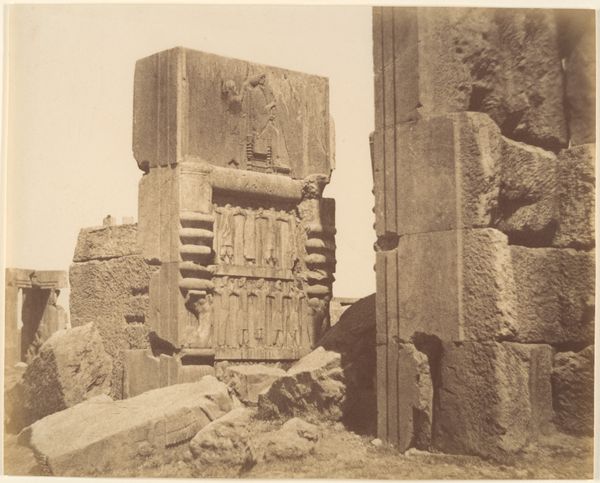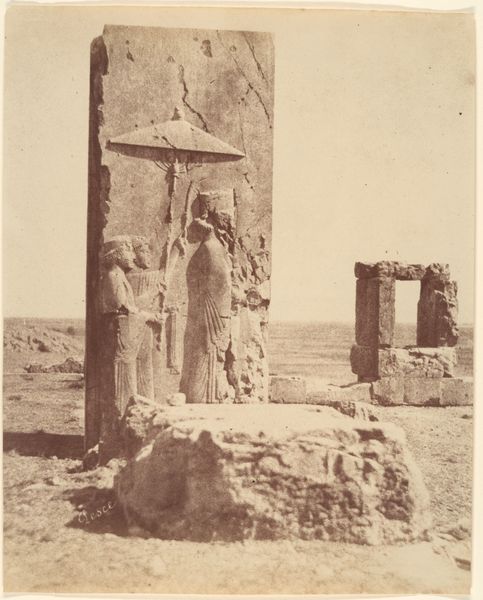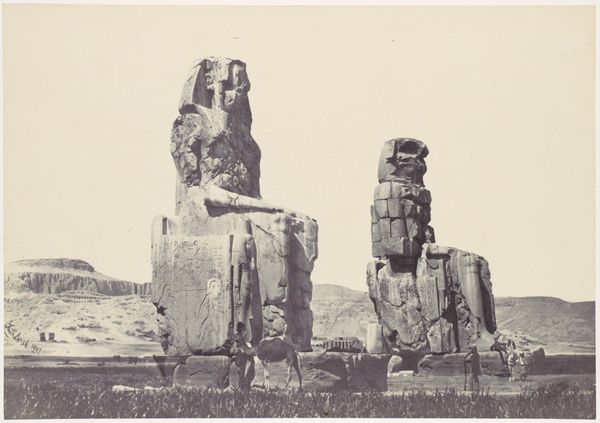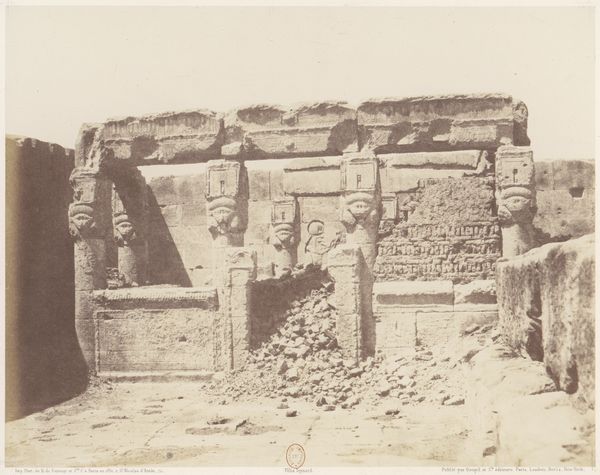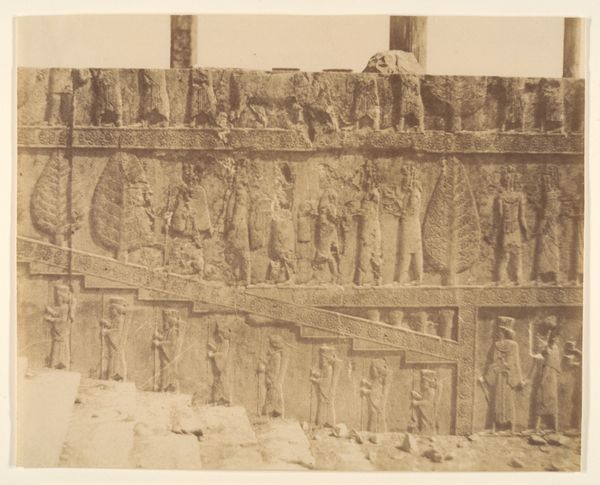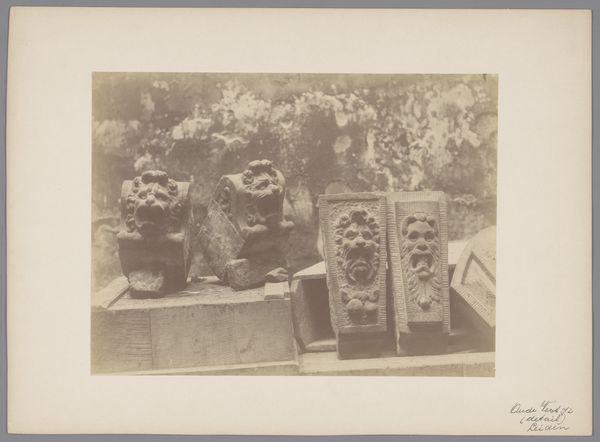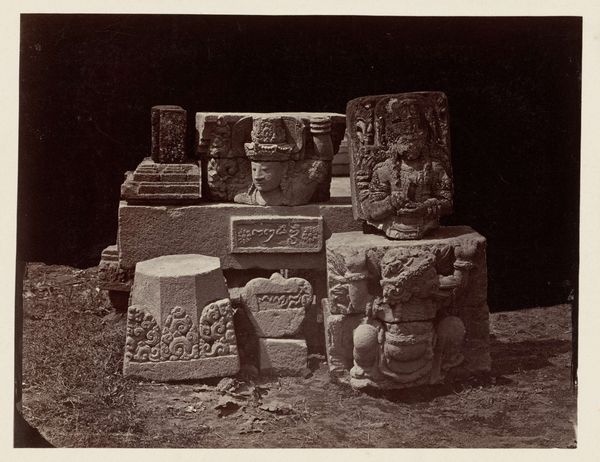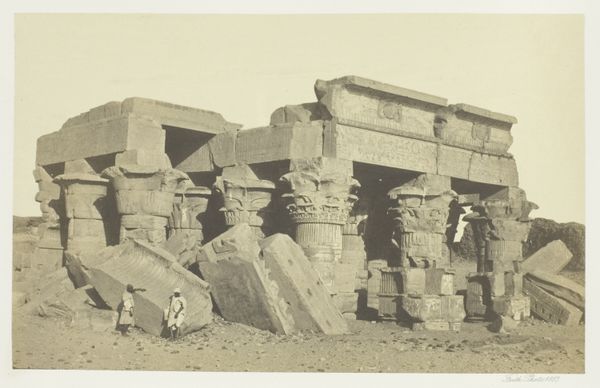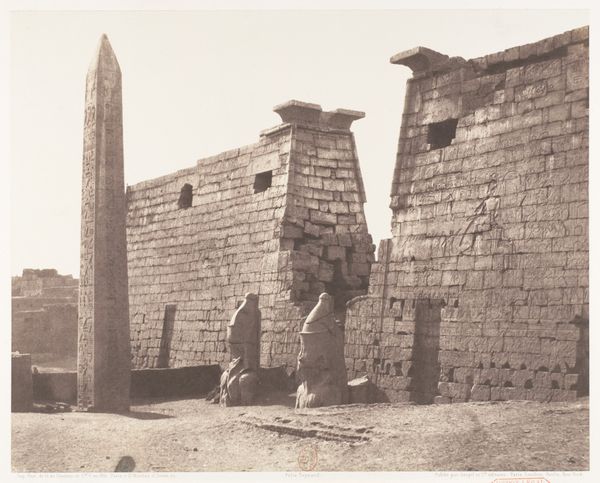![[Persepolis] by Luigi Pesce](/_next/image?url=https%3A%2F%2Fd2w8kbdekdi1gv.cloudfront.net%2FeyJidWNrZXQiOiAiYXJ0ZXJhLWltYWdlcy1idWNrZXQiLCAia2V5IjogImFydHdvcmtzLzllYjJjN2UzLWUxYzktNGRhOS1iMzYyLTY2YWVlOTdjZGVkYi85ZWIyYzdlMy1lMWM5LTRkYTktYjM2Mi02NmFlZTk3Y2RlZGJfZnVsbC5qcGciLCAiZWRpdHMiOiB7InJlc2l6ZSI6IHsid2lkdGgiOiAxOTIwLCAiaGVpZ2h0IjogMTkyMCwgImZpdCI6ICJpbnNpZGUifX19&w=3840&q=75)
sculpture
#
excavation photography
#
natural shape and form
#
sculpture
#
charcoal drawing
#
charcoal art
#
carved into stone
#
stoneware
#
underpainting
#
sculpture
#
charcoal
#
watercolor
Copyright: Public Domain
Editor: Here we have Luigi Pesce's photograph "[Persepolis]" from the 1850s, currently housed at the Metropolitan Museum of Art. Looking at the worn carvings, it evokes a feeling of ancient grandeur, doesn't it? The sepia tone and visible decay lend a solemn weight to the monumental forms. What aspects of its formal qualities stand out to you? Curator: The composition's reliance on verticality is striking. Observe how the fluted columns flanking the relief dictate the image's structure. Furthermore, consider the light's play. The contrast between the sunlit surfaces and the deeply shadowed carvings enhances the sculptural depth, accentuating the forms within the relief. Note how the textures create visual interest. Editor: The high contrast and use of textures really emphasize the three-dimensionality despite being a photograph, right? Do you see the carving as successful because of the image or does the image support the beauty of the sculpture itself? Curator: The question of primacy is an interesting one. Note how Pesce’s perspective selectively frames the Persepolitan sculpture. While the carvings possess inherent visual interest by means of the formal qualities such as shape, line, contrast and tonality. This framing and angle suggests this relief of a person and a Lamassu, almost purposefully directs us to appreciate how the linear shapes work with the space. We might even read in the relief’s physical fragmentation the conceptual fragmentation of space. Do you find evidence supporting this position? Editor: I think so; the framing helps contextualize this grand monument, a space lost in time, as well as appreciate its qualities in their most distilled form. Now, I definitely appreciate the texture. Curator: Indeed. Pesce offers not merely documentation, but also a composed meditation on form and time. A poignant illustration through the interplay of verticality, illumination, and material textures.
Comments
No comments
Be the first to comment and join the conversation on the ultimate creative platform.

